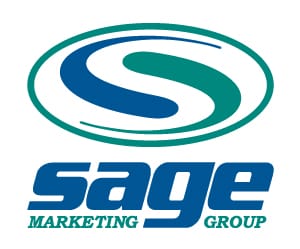In my previous post “Why Your Business Needs a Responsive Website,” I discussed the reasons why every business should have a modern, responsive website design. In this era of smartphone dominance, it is crucial for websites to be accessible from any device, from mobile devices to desktop computers and everything in between.
Having an easy to use, well designed responsive website is about more than just look and feel, however. Your site should be able to deliver exactly what a visitor is looking for to learn more about your business.
In most circumstances, the first thing your visitor sees will be your home page. Think of your home page as the trailer to your movie, the cover to your book, or the cover letter to your resume. As the introduction to the rest of your site, your home page sets the tone for everything else to follow. This is the best place to really make sure your branding shines through. That means your logo, colors, and typography, but more importantly, making sure you communicate your brand messaging effectively.
Whether your start off with a big, beautiful image, or jump straight to a list of your recent articles, the first thing your visitor sees should give them some insight about who you are, what you do, and what you’re trying to say.
Just as importantly, this is where you want your navigation to stand out. This is the portal to the rest of your site, so you should have a clear functional menu that is easy to find. The “hamburger” menu icon is becoming standard, but you really can’t go wrong with a prominent button labeled “Menu” either. Whichever method you choose, it’s important that once your navigation is actually open, it’s laid out clearly and concisely to direct people to the pages they want to find quickly.
You can also use the body of your home page to direct to featured information that you want to steer your visitors to first, utilizing call-out boxes, new page sections, or simply inline links.
Naturally, your home page should shine at any resolution in which your visitors view it. Make sure your site can resize and reflow based on the most popular devices sizes, from smartphone and tablet, to laptop and desktop.
While he wasn’t the first to float the idea, Bill Gates’ famous quote, “Content is King,” is more true today than it was then. Content is essentially the meat of your site, the reason people visit and then keep coming back. Informative pages, blog posts, news articles, rich media, even feeds from your social media accounts — all of these and more help boost your search engine rankings, raise awareness of what your business does, and ultimately increase the total number of visitors to your site.
Even if you don’t picture yourself as a blogger or content creator, it’s still important to have a content marketing strategy in place. Educating visitors about your industry and your business helps build trust that you know what you’re talking about, which means that visitor is likely to return for more information about related matters. From there, it’s easy to connect more and happier visitors to your overall marketing strategy, whether you are looking to increase sales, generate advertising revenue, gain more followers, or simply get more people through the door of your shop.
Here too, responsive website design is critical. Make sure your content is easy to find and consume no matter what device your visitor is using.
Having a clear, useful contact page is one of the most important elements you can put on your website. It doesn’t matter if you’re running an online shop, a content driven blog, or a traditional brick and mortar business, it’s important that your visitors can quickly find out where to find you — whether that means online or in person.
Responsive website design is the key here as well. A visitor should be able to dial your phone number simply by tapping on it from their phone. Make sure your form is easy to fill out and send from a mobile device as well. If you are expecting foot traffic and high call volume, directions, hours, and a good map will guide people to your front door.

125 S. HOWES, #1C
FORT COLLINS, CO 80521
We love questions. get in touch
Copyright © 2024 Sage Marketing Group, Inc. All Rights Reserved. Website designed and built by us of course! (Sage Marketing Group, Inc.)
The unrelenting determination and effort to create sweet projects that make our clients so happy they want to cry.
| Cookie | Duration | Description |
|---|---|---|
| cookielawinfo-checkbox-analytics | 11 months | This cookie is set by GDPR Cookie Consent plugin. The cookie is used to store the user consent for the cookies in the category "Analytics". |
| cookielawinfo-checkbox-functional | 11 months | The cookie is set by GDPR cookie consent to record the user consent for the cookies in the category "Functional". |
| cookielawinfo-checkbox-necessary | 11 months | This cookie is set by GDPR Cookie Consent plugin. The cookies is used to store the user consent for the cookies in the category "Necessary". |
| cookielawinfo-checkbox-others | 11 months | This cookie is set by GDPR Cookie Consent plugin. The cookie is used to store the user consent for the cookies in the category "Other. |
| cookielawinfo-checkbox-performance | 11 months | This cookie is set by GDPR Cookie Consent plugin. The cookie is used to store the user consent for the cookies in the category "Performance". |
| viewed_cookie_policy | 11 months | The cookie is set by the GDPR Cookie Consent plugin and is used to store whether or not user has consented to the use of cookies. It does not store any personal data. |